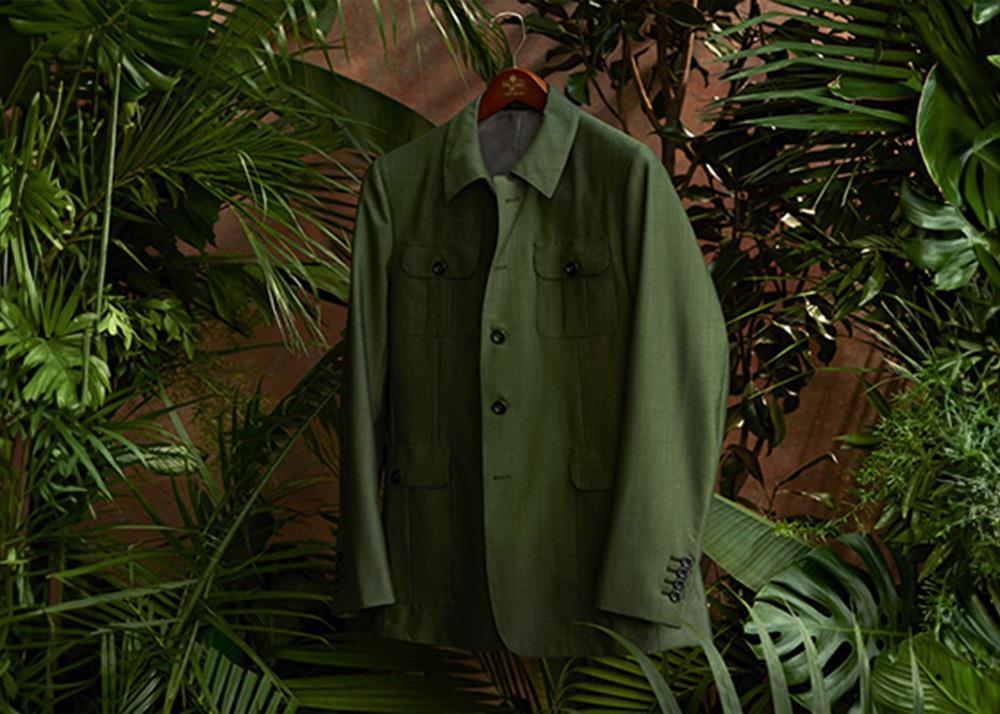The Future of Cape Town Sustainable Fashion in the Global Market
The Future of Cape Town Sustainable Fashion in the Global Market
Blog Article
Keep Ahead of the Curve by Checking Out Cutting-edge Fashion Fads
In a market as dynamic as fashion, remaining ahead involves even more than just following present trends-- it requires an exploration of technology. The convergence of technology and style heralds a new age of customer engagement.

Embracing Smart Textiles
In current years, the garment industry has actually experienced a transformative shift with the assimilation of wise textiles, a sophisticated technology that blends technology with textile. This evolution represents not only a combination of aesthetic appeals and performance yet likewise a significant jump towards sustainability and customization in vogue. Smart textiles, additionally referred to as e-textiles, embed innovative electronics such as sensors and conductive strings within the textile, making it possible for garments to engage with the environment or the wearer.
These fabrics are developed to check physiological criteria, such as heart rate or body temperature, providing real-time health analytics. Past wellness applications, wise fabrics are additionally being used for flexible garments, which can transform color or pattern in reaction to ecological stimuli, thus providing a vibrant style experience.
Additionally, the advancement of energy-harvesting textiles that generate power from movement or sunlight is leading the way for self-dependent wearable technology. This development is interesting eco conscious customers and designers aiming to lower the environmental footprint of style. As r & d in this field breakthrough, wise textiles are expected to become increasingly common, reshaping the landscape of contemporary style with their multifunctional capabilities.
The Surge of 3D Printing
Transforming the production landscape, 3D printing has arised as a game-changer in the fashion business. This innovative modern technology has enabled developers to push the borders of creativity, creating complex and customized garments that were formerly unthinkable. By leveraging digital style and additive manufacturing, 3D printing helps with the creation of intricate geometries and patterns, allowing developers to try out brand-new appearances and frameworks.
A remarkable advantage of 3D printing in style is its capacity to generate on-demand, minimizing waste and lowering inventory requirements. This effectiveness not only enhances manufacturing processes yet likewise permits for quick prototyping, making it possible for designers to bring their visions to life in a much shorter duration. Moreover, 3D printing sustains customization to a degree unequaled by traditional methods, supplying tailored fits and distinct designs customized to individual consumer choices.
The rise of 3D printing has also equalized fashion, making it accessible to emerging designers who can currently produce high-grade pieces without substantial economic investment in typical production facilities. As innovation remains to breakthrough, the fashion business is poised to harness the complete possibility of 3D printing, exploring brand-new materials and strategies that will unquestionably redefine how style is conceived and produced.
Lasting Fashion Advancements
As the fashion business faces the pressing requirement for ecological duty, lasting style technologies have actually emerged at the center of transformative adjustment. The growing awareness of ecological effect has fueled a change in the direction of even more eco-conscious practices and products. Designers and brand names are currently focusing on sustainability, including approaches that lessen waste and reduce carbon footprints.
One significant advancement is the rise of round style, which stresses recycling and upcycling to prolong the lifecycle of garments. This strategy not just decreases waste however also urges customers to adopt a much more conscious approach to apparel intake. In addition, making use of lasting materials, such as organic cotton, hemp, and recycled polyester, has actually obtained traction. These products require much less water and energy throughout production, dramatically decreasing environmental influence.
Another development exists in the fostering of ingenious dyeing strategies that utilize waterless procedures or all-natural dyes, therefore reducing the huge quantities of water and chemicals typically used in textile dyeing. Additionally, innovations in biotechnology have led to the creation of lab-grown leather and materials, supplying cruelty-free and environmentally friendly choices to standard materials. Via these pioneering initiatives, the fashion business is making meaningful strides in the direction of an extra lasting future.

Tech-Integrated Clothing
Tech-integrated garments stands for a cutting-edge fusion of style and modern technology, reshaping just how individuals interact with their clothes. This ingenious domain name is marked by the incorporation of smart textiles and ingrained digital components, boosting both functionality and visual appeal. From fitness trackers embedded in sportswear to heated coats controlled via mobile phone apps, tech-integrated apparel provides customers unprecedented benefit and adaptability.
Introducing brands are driving this trend, focusing on creating garments that react to environmental stimulations or individual commands. For circumstances, some garments can alter color or pattern in response to temperature level shifts, while others incorporate biometric sensors to check health and wellness metrics like heart rate or tension levels. The smooth integration of modern technology into fabrics likewise expands to environmental sustainability, with initiatives to create self-cleaning fabrics or garments that get used to weather problems, hence decreasing the demand for multiple layers.
Additionally, the development of wearable modern technology is not just limited to apparel but extends to accessories like watches and eyewear, additional widening the extent of tech-integrated fashion. As the sector remains to introduce, the potential for modification and customization in clothing grows, providing consumers distinct, tech-enhanced fashion experiences that accommodate their private needs and preferences.
Future of Virtual Style
Recently, the future of virtual style has actually emerged as a transformative force within the market, leveraging advancements in digital technology to redefine how fashion is developed, experienced, and taken in. By incorporating augmented truth (AR), online fact (VIRTUAL REALITY), and 3D style devices, designers can now craft immersive and interactive experiences that go beyond standard style borders. Virtual style permits the creation of garments that exist only in electronic settings, supplying limitless possibilities for development without the constraints of physical production.
This digital change not just provides chances for innovative expression but likewise addresses sustainability concerns integral in standard style methods. Cape Town pop over to this site Sustainable Fashion. By removing the need for physical resources, digital fashion reduces waste and reduces carbon impacts. In addition, the increase of digital fashion aligns with the boosting useful source customer need for one-of-a-kind and individualized experiences, as digital garments can be personalized and customized to specific choices with simplicity

Conclusion
The style market's future lies in the integration of cutting-edge modern technologies and lasting practices. Online fashion is poised to redefine customer interactions.
In current years, the style sector has seen a transformative change with the assimilation of clever textiles, an innovative technology that blends innovation with material.As the fashion market grapples with the pushing requirement for environmental responsibility, sustainable style advancements have emerged at the forefront of transformative adjustment.In current years, the future of digital style has actually emerged as a transformative pressure within the sector, leveraging improvements in electronic modern technology to redefine how fashion is produced, experienced, and consumed. The increase of find this online fashion straightens with the raising consumer demand for personalized and special experiences, as virtual garments can be tailored and customized to individual preferences with convenience.
The style industry's future lies in the combination of cutting-edge modern technologies and lasting practices.
Report this page